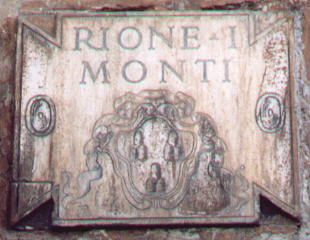 |
The
“Monti” district is close to the Coliseum and corresponds
to the ancient Suburra,
the oldest popular district of the ancient Rome.
The name may come from the latin “sub urbe” which
literally means “under the city”,
that is under the Roman Forum, the political and religious heart
of the City.
The Suburra used to daily represent the social and human contraddictions
of the Capital of the Empire: it was very crowded, dirty, noisy
and above all dangerous due to the several fires and collapses
affecting the insulae.
This is the name of the buildings reported to be up to five-floor
high but which could reach at times twice this height in case
of unlawful constructions. There, a high number of plebeian families
were crammed into tiny, rented flats.The
most disreputable brothels were here as well as the taverns and
the most insecure inns. Here Julius Caesar was born, here Nero
used to come at night to try out the people’s moods and
Messalina used to go to the ancient brothels
called “Lupanaro” in search of transgression. |